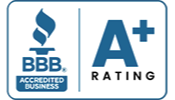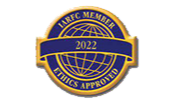One of the most critical aspects of retirement planning is managing taxes efficiently. Two key elements that can significantly impact your retirement income are Required Minimum Distributions (RMDs) and capital gains. Understanding these factors and implementing strategic planning can help you preserve more of your wealth and ensure your income lasts throughout retirement.
In this blog, we’ll explore what RMDs and capital gains are, why they matter, and how you can help plan your retirement income in a tax-efficient way.
What Are RMDs?

Required Minimum Distributions (RMDs) are the minimum amounts that the IRS requires you to withdraw from certain retirement accounts once you reach a specific age. The purpose of RMDs is to help ensure that individuals eventually pay taxes on their tax-deferred retirement savings.
Accounts Subject to RMDs
RMDs apply to the following account types:
- Traditional IRAs
- SEP IRAs and SIMPLE IRAs
- 401(k), 403(b), and 457(b) plans
- Other employer-sponsored retirement plans
It’s important to note that Roth IRAs do not have RMDs during the original account owner’s lifetime, making them a powerful tool for tax planning.
RMD Age and Calculation
Currently, the RMD age is 73 (for individuals turning 73 after December 31, 2023). Previously, it was 72. Your RMD is calculated based on your account balance as of December 31 of the previous year, divided by a life expectancy factor published by the IRS.
For example, if your IRA balance is $500,000 and your IRS life expectancy factor is 27, your RMD for the year would be approximately $18,518.
Consequences of Missing an RMD
Failing to take your RMD can be costly. The IRS imposes a 50% excise tax on the amount you should have withdrawn but did not. For example, if your required distribution was $20,000 and you did not take it, you could owe $10,000 in penalties. This makes careful planning crucial.
Understanding Capital Gains

While RMDs apply to tax-deferred accounts, capital gains typically apply to taxable investment accounts. Capital gains occur when you sell an investment for more than you paid for it.
Types of Capital Gains
- Short-term capital gains: Gains on assets held for one year or less are taxed at your ordinary income tax rate, which can be as high as 37% at the federal level.
- Long-term capital gains: Gains on assets held for more than one year are taxed at a lower rate, typically 0%, 15%, or 20%, depending on your taxable income.
For retirees, capital gains can be a powerful tool for supplementing income, particularly if planned strategically to help minimize tax liability.
Tax Considerations
Even though long-term capital gains rates are generally lower than ordinary income rates, selling investments indiscriminately can still push you into a higher tax bracket. Additionally, gains can affect other taxes, such as:
- Medicare surtax: High-income retirees may be subject to a 3.8% Net Investment Income Tax.
- Social Security taxation: Your capital gains could make more of your Social Security benefits taxable.
Why RMDs and Capital Gains Matter Together
Many retirees hold both tax-deferred accounts (like IRAs or 401(k)s) and taxable accounts (like brokerage accounts). Coordinating distributions and capital gains sales can help reduce your overall tax burden.
The Tax-Efficiency Challenge
RMDs are taxed as ordinary income. If you also sell investments in a taxable account, the combination of ordinary income and capital gains can push you into a higher tax bracket. Poorly timed withdrawals and sales can trigger unnecessary taxes, reducing the longevity of your portfolio.
Example Scenario
Imagine a retiree with $800,000 in a traditional IRA and $200,000 in a taxable brokerage account. Their RMD for the year is $30,000. If they also sell $50,000 worth of stocks in the brokerage account with $20,000 in long-term gains, their taxable income could jump, increasing the tax rate on both RMDs and capital gains.
Strategically managing these withdrawals can help reduce taxes, preserve more wealth, and provide more consistent retirement income.
Strategies for Tax-Efficient Retirement Income

Here are practical strategies retirees can use to help optimize withdrawals and manage taxes:
1. Consider Roth Conversions
Roth conversions involve transferring funds from a traditional IRA or 401(k) into a Roth IRA. Taxes are paid at the time of conversion, but future withdrawals, including RMDs, are tax-free.
Benefits:
- Reduces future RMDs, potentially lowering taxable income in retirement.
- Provides a tax-free income source for later years.
- Can be timed in lower-income years to help minimize the conversion tax impact.
Example: Converting $50,000 from a traditional IRA to a Roth IRA in a year when your income is unusually low may result in paying taxes at a lower rate than you would in future years when RMDs increase your taxable income.
2. Strategically Withdraw from Taxable Accounts
Selling investments in a taxable account before reaching the RMD age can help you manage future RMDs more efficiently. This is sometimes called tax bracket management.
Advantages:
- Helps allow you to take advantage of lower long-term capital gains rates.
- Helps reduce the size of tax-deferred accounts, thereby reducing future RMDs.
- Helps provide cash flow for early retirement without increasing ordinary income.
Tip: Work with your financial advisor to map out withdrawals and capital gains sales over multiple years, keeping your tax bracket in mind.
3. Charity Donations
Qualified charitable distributions (QCDs) allow retirees to donate directly from their IRAs to a qualified charity.
Benefits:
- Counts toward your RMD, satisfying IRS requirements.
- Excluding taxable income can help lower your overall tax burden.
- Supports causes you care about while helping to reduce taxes.
Example: A $10,000 QCD reduces both your RMD and taxable income by $10,000.
4. Harvest Capital Losses
Offset capital gains with capital losses from your taxable accounts. This strategy, known as tax-loss harvesting, can reduce your taxable income.
Advantages:
- Helps minimize taxes owed on capital gains.
- Can be used to offset up to $3,000 of ordinary income per year.
- Helps provide flexibility for future years’ gains.
Tip: Keep in mind the wash-sale rule, which prevents claiming a loss if you buy the same or substantially identical security within 30 days.
5. Consider Timing RMDs
If possible, retirees can strategically time withdrawals from tax-deferred accounts to manage taxable income.
Example:
If your RMD is $25,000 but your total income is close to a tax bracket threshold, you might take slightly less RMD and cover the rest from Roth or taxable accounts to avoid jumping into a higher bracket.
In some cases, spreading RMDs over multiple accounts or taking partial distributions in advance of RMD age (where allowed) can help reduce the annual tax burden.
6. Monitor State Taxes
State income taxes vary significantly and can impact both RMDs and capital gains. Retirees living in high-tax states may want to explore options such as:
- Moving to a state with lower or no income tax.
- Using tax-advantaged accounts strategically.
- Consulting with a tax professional for state-specific strategies.
Balancing Income Needs with Tax Efficiency
Ultimately, retirement planning is a balancing act. You want enough income to cover living expenses, while helping minimize taxes and preserve your portfolio.
Key considerations include:
- Income sequencing: Decide which accounts to draw from first: taxable, tax-deferred, or tax-free (Roth).
- Brackets and thresholds: Stay mindful of tax brackets, Medicare premiums, and Social Security taxation thresholds.
- Longevity risk: Ensure that withdrawals do not deplete your assets too early.
Working with a Fiduciary Advisor
Managing RMDs and capital gains can be complex, and the stakes are high. A skilled fiduciary advisor can help:
- Project future RMDs and taxable income.
- Create a coordinated withdrawal strategy.
- Implement Roth conversions, QCDs, and tax-loss harvesting efficiently.
- Monitor and adjust strategies as tax laws and personal circumstances change.
At Agemy Financial Strategies, we’re experienced in helping retirees create tax-efficient income strategies that balance the need for cash flow with the goal of preserving wealth. Proactively planning can help you reduce unnecessary taxes, protect your portfolio, and enjoy a more secure retirement.
Key Takeaways
- RMDs are mandatory withdrawals from tax-deferred accounts and are taxed as ordinary income.
- Capital gains occur in taxable accounts and can be managed strategically to help minimize taxes.
- Combining RMDs and capital gains planning helps optimize tax efficiency and retirement income.
- Strategies like Roth conversions, charitable giving, tax-loss harvesting, and timing withdrawals can help reduce taxes and increase financial flexibility.
- Working with a financial advisor helps ensure a personalized, comprehensive approach to retirement income planning.
Tax-efficient retirement planning is not just about paying fewer taxes; it’s about creating a sustainable, predictable income stream for the life you envision. Understanding RMDs, capital gains, and strategic planning options can help you maximize your retirement savings, protect your wealth, and enjoy the lifestyle you’ve worked so hard to achieve.
Contact Agemy Financial Strategies

If you want to help ensure your retirement income is tax-efficient and sustainable, Agemy Financial Strategies can guide you. Our team provides tailored strategies to help retirees manage RMDs, capital gains, and other critical financial considerations.
Contact us today to schedule a consultation and start planning for a retirement that’s as smart as it is fulfilling.
Frequently Asked Questions (FAQs)
1. What is the difference between RMDs and capital gains?
Answer: RMDs (Required Minimum Distributions) are mandatory withdrawals from tax-deferred retirement accounts like traditional IRAs and 401(k)s, taxed as ordinary income. Capital gains occur when you sell investments in taxable accounts for a profit. Unlike RMDs, capital gains can be managed and timed strategically to help reduce taxes.
2. At what age do I have to start taking RMDs?
Answer: The current RMD age is 73 for individuals turning 73 after December 31, 2023. Previously, it was 72. RMDs are calculated annually based on your account balance and life expectancy factor published by the IRS.
3. Can I avoid paying taxes on my RMDs?
Answer: While RMDs themselves are generally taxable as ordinary income, you can help to reduce their impact through strategies like Roth conversions, charitable donations via Qualified Charitable Distributions (QCDs), or careful withdrawal planning that balances income across different account types.
4. How do capital gains affect my retirement taxes?
Answer: Selling investments in taxable accounts can help generate short-term or long-term capital gains. These gains may push you into a higher tax bracket, affect Social Security taxation, or trigger additional taxes like the Medicare surtax. Strategic planning can help minimize the tax impact while providing supplemental retirement income.
5. Should I work with a financial advisor to manage RMDs and capital gains?
Answer: Absolutely. Managing RMDs and capital gains can be complex, with multiple tax rules, income thresholds, and planning strategies to consider. A financial advisor can help create a personalized, tax-efficient plan that helps balance income needs, preserves wealth, and adapts to changing tax laws and personal circumstances.
Disclaimer: This material is for educational purposes only and does not constitute individualized financial, legal, or tax advice. Consult your professional advisors about your specific situation and state-specific rules.





 Key Features of the Reserve
Key Features of the Reserve
 The Security of the U.S. Reserve: Cold Storage and Multi-Signature Protocols
The Security of the U.S. Reserve: Cold Storage and Multi-Signature Protocols

 2. Have a Sound Retirement Income Strategy
2. Have a Sound Retirement Income Strategy



 A Fiduciary’s Perspective on Long-Term Wealth Growth
A Fiduciary’s Perspective on Long-Term Wealth Growth



